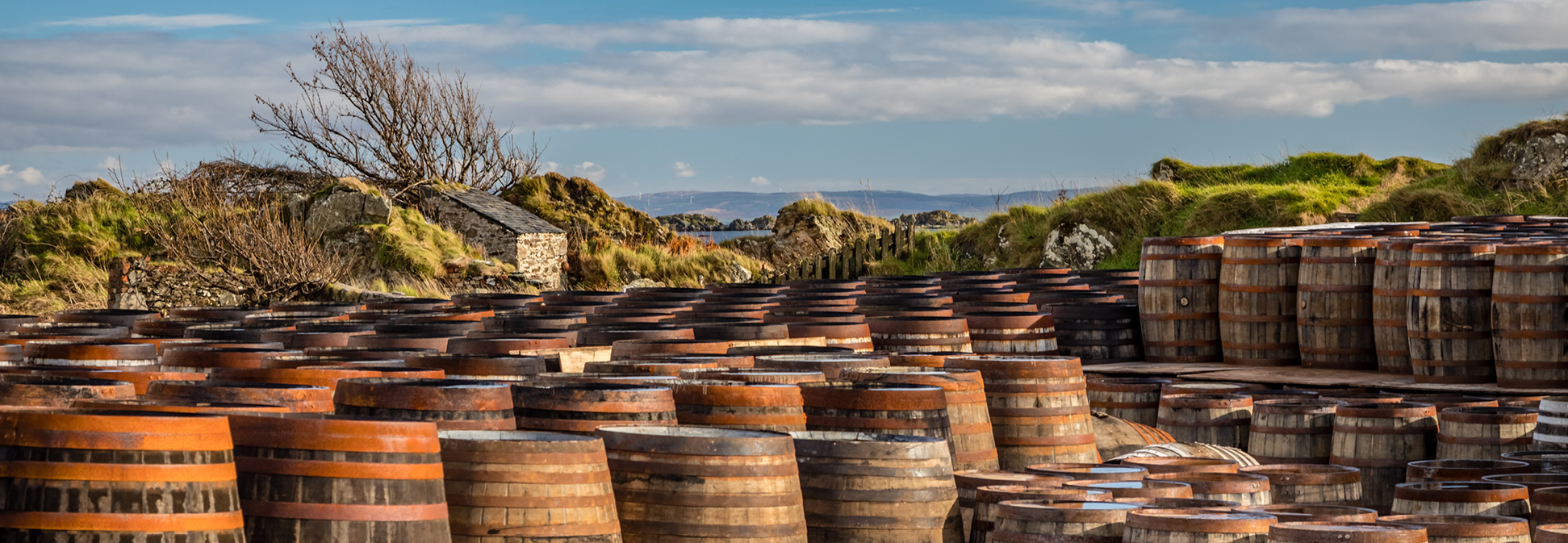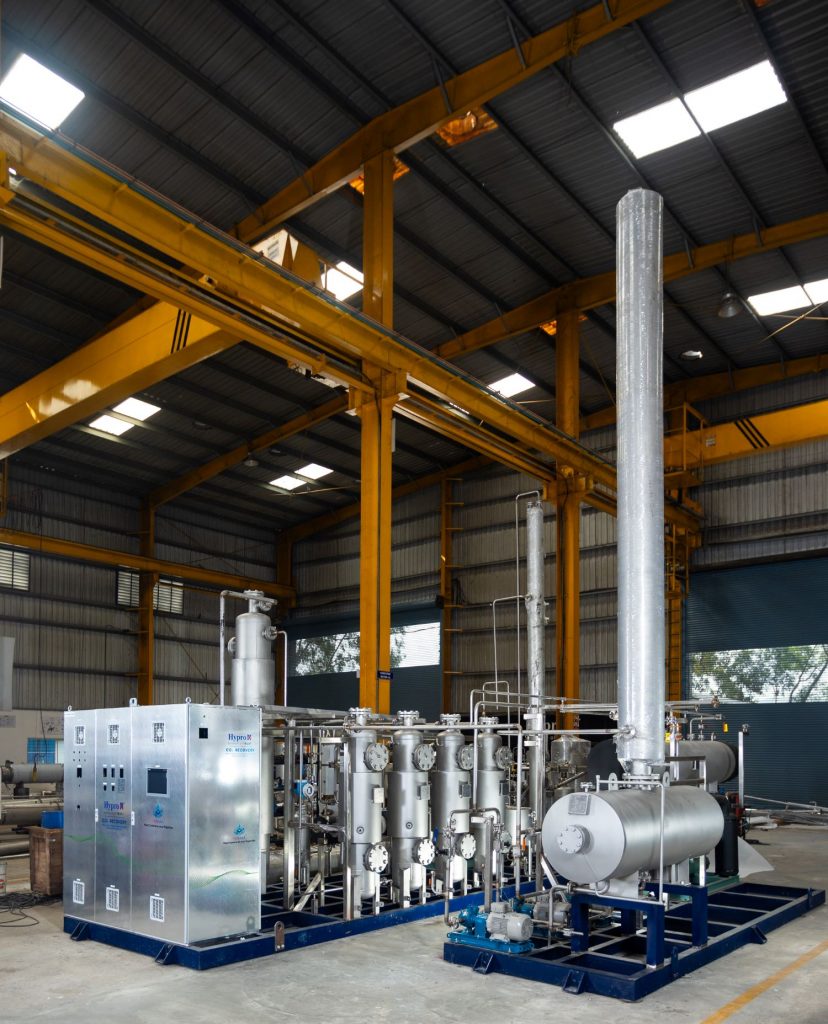#CO2 #Spirits #AlcoholBeverage #Sustainability
Distillery CO2: 4 Solutions for Common Recovery Problems
Distillery CO2 recovery isn’t just a green initiative anymore — it’s an operational asset. But for many plant managers and project heads, the reality on the ground reveals another layer: technical bottlenecks that quietly eat into purity, uptime, and ROI. From foam contamination to oxygen ingress, from invisible losses during transfers to post-recovery flow disruptions — every stage brings its own set of risks. Let’s uncover 4 of the most pressing issues observed in live distillery environments. If distillery CO2 recovery is on your radar, consider this a technical deep dive into what actually goes wrong — and what to do about it.

01.
Foam and Fermentation Residue: The Hidden Contaminants in Distillery CO2 Recovery
Why Distillery CO2 Streams Face Heavier Foam Loads Than Brewery Gas
Fermentation in distilleries is designed for conversion efficiency, not drinkability. As a result, the process often involves higher solids content and greater nitrogen availability — conditions that intensify metabolic by-products and protein-based foaming. Common feedstocks like:
- Grain slurry (e.g., maize, wheat, sorghum)
- Molasses or jaggery-based feedstocks
- Broken rice or other regional substrates
…all tend to generate dense, protein-rich foam layers during active fermentation.
- Proper gas-phase foam arrestors
- Dedicated foam traps or wash columns before gas compression
- Hygienic vent nozzles designed for vapor-liquid separation
- Unwanted ethanol vapor
- Acetaldehydes and higher alcohols
- Yeast cells and protein fragments
What Happens When Foam Enters the CO2 Recovery System
The impact is immediate and multi-layered:
- Scrubbers and filters clog prematurely, increasing pressure drop and reducing flow efficiency
- Compressors face uneven loading, risking mechanical damage or seal failure
- Moisture carryover combines with alcohol vapors, making gas drying and liquefaction stages unstable
- Purity drops significantly — especially for distilleries targeting food-grade CO2
And in many plants, frequent shutdowns for cleaning become the norm, adding to downtime and operating cost.
How Hypro’s CO2 Recovery System Addresses Foam and Fermentation Residue at the Source

Low-Pressure Gas Purification with Foam Washing
The first collection stage includes a dedicated foam-wash chamber, which physically separates entrained foam and soluble impurities from the gas stream before compression begins.
Structured Vapor–Liquid Contact Zones
Inside the purification tower, specially designed internals create turbulence and wetted surface contact, helping strip off aerosolized volatiles and micro-foam before they can carry into compressors.
Stainless Steel SS304 Gas Paths
Hygienic-grade, smooth-bore stainless lines minimize static cling of protein particles and biofilms — reducing contamination build-up over time.
Inline Drainage and Automatic Foam Trap Systems
Built-in condensate and foam outlets allow for periodic purging — without requiring full shutdowns.
Why This Matters for Distilleries Pursuing Purity and Reliability
02.
Oxygen Contamination in Distillery CO2 Recovery: Why It Happens and How to Prevent It
What Causes Oxygen in Distillery CO2 Recovery Systems?
- Low-pressure suction lines or buffer tanks develop micro-leaks, especially in older or unsealed joints
- Fermenter venting without adequate purging allows ambient air to mix with the CO2 stream
- Improper start-up sequences (e.g. skipping inert gas purging or incorrect valve actuation)
- Material degradation or corroded pipeline segments in non-SS installations
Unlike process contaminants like aldehydes or moisture, oxygen is invasive and invisible. If it slips into the system, it compromises purity right at the compression stage — where it gets locked in and difficult to remove.
How a Modern CO2 Recovery System Prevents Oxygen Ingress in Distilleries
Here’s how the Hypro CO2 recovery system addresses oxygen contamination in distilleries:
Optimized System Pressure
Operating at 16–18 bar g creates a positive pressure environment that naturally repels oxygen ingress in vulnerable segments like gas collection lines or buffer tanks.
Hygienic SS304 Contact Surfaces
All wetted parts and gas paths built with stainless steel (SS304) ensure long-term sealing integrity and corrosion resistance — a major factor in micro-leak prevention.
Multi-Stage Gas Purification
Hypro’s system integrates:
- Foam washing to remove biological carryover
- Water-soluble impurity removal to reduce volatility
- High-pressure drying and odor polishing — including filters capable of handling trace oxygen
Automated Start-Up & Venting Logic
Hypro’s PLC-based control logic automates critical sequences — reducing human error during startup and ensuring oxygen is vented before gas is compressed.
Designing for the Problem Before It Occurs
While the earlier-mentioned distillery faced significant oxygen ingress challenges, similar issues are common across the industry. What sets Hypro apart is its ability to design out such risks from the beginning.
Why Oxygen Prevention is Central to Distillery CO2 Recovery
03.
Uncaptured CO2 During Transfers: The Invisible Loss in Distillery CO2 Recovery
Where Is the CO₂ Going?
- These tanks aren’t connected to the CO2 recovery line
- There’s no buffer system to collect low-pressure vent gas
- The system design assumes fermenter-only integration, leaving transfer-phase emissions completely untouched
Why This Loss Matters
- Undermines the overall recovery ROI
- Reduces available CO2 for reuse in inerting, carbonation, or sale
- Weakens environmental reporting and GHG reduction claims
Can This Be Solved? A Case for System Architecture, Not Just Equipment
- Multi-source integration with pressure balancing
- Buffer balloons or vacuum-assisted collection modules
- Pre-treatment of vent gas to remove moisture or contaminants
- And software logic to manage unsteady gas flow without destabilizing compressors
Hypro’s Forward-Looking Approach: Recovery Beyond the Fermenter
- The system is modular
- Gas paths are pressure-optimized
- Control logic is programmable via PLC
- And the purification train can accommodate multiple sources — with proper pre-conditioning
In other words: the foundation is in place.
Distillery CO2 Isn’t Just in the Fermenter — and Neither Should Recovery Be
04.
When CO2 Regulators Freeze: A Design Issue, Not a Recovery Flaw
Distillery CO2 Recovery and the Invisible Threat of Flow Disruptions
The Physics Behind the Freeze
In real-world operations, this freezing is often aggravated by:
- Undersized regulators not rated for high SCFM flow
- Long, narrow, or flexible gas lines with minimal internal volume
- Inadequate vaporizer placement or sizing
- Poorly balanced distribution between usage points
These problems don’t appear on a specification sheet — but they can paralyze operations during peak usage.
Why It Matters in CO2 Recovery at Distilleries
How Hypro Thinks Beyond the Recovery Skid
That means
- Advising on pipe routing and sizing to reduce frictional losses
- Ensuring line volume is sufficient to prevent sudden vacuum effects
- Collaborating on vaporizer positioning for thermal efficiency
- Encouraging regulator and component selection based on peak load mapping, not just steady-state use
Conclusion
“The most overlooked failure in CO2 recovery systems isn’t a machine breakdown — it’s a frozen regulator, caused by the silence of a missing design conversation.”
Freezing and flow issues may seem like minor inconveniences, but they stem from a much deeper need: holistic engineering that looks beyond purity and recovery rates — and into the real-world behavior of your plant. That’s where Hypro quietly makes the biggest difference.
Distillery CO2 Recovery Is No Longer About Just Recovery
Related Posts
Engineering Sustainability
Hypro believes Earth Day is more than a moment - it’s a mission. From sustainability-driven innovations to CO₂ recovery and digital transformation, discover how Hypro...
Read MoreEnvironment First
On the World Environment Day, Hypro redefines the role of industry - not as a force that extracts, but as one that restores. With over...
Read MoreCO2 Recovery Distilleries
Distilleries can now capture and reuse CO₂ from fermentation, reducing emissions and providing an internal CO₂ supply for production needs. This sustainable practice not only...
Read More



